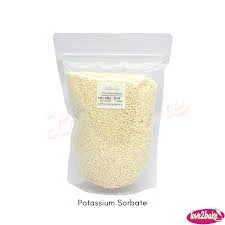
Exploring the Properties and Applications of Emulsifiers 471 and 472 in Food Industry
Understanding Emulsifiers E471 and E472 What You Need to Know
Emulsifiers are essential food additives that play a crucial role in the food industry. They help stabilize mixtures that typically do not blend well, such as oil and water. Among the many emulsifiers used, E471 and E472 are prominent and commonly found in a variety of food products. In this article, we will delve into what these emulsifiers are, their sources, functions, and safety considerations.
What are E471 and E472?
E471 is a designation for mono- and diglycerides of fatty acids, which are derived from glycerol and natural fats or oils. These emulsifiers are used to improve the texture and shelf life of various food products. They can be found in items like margarine, baked goods, and ice creams, providing a smoother texture and preventing separation of ingredients.
E472, on the other hand, refers to esters of glycerol with fatty acids, which are also used as emulsifiers. There are various subcategories within E472, including E472a (acetylated tartaric acid esters of mono- and diglycerides), E472b (lactic acid esters of mono- and diglycerides), and others. These emulsifiers serve similar functions as E471, enhancing the stability and consistency of food products.
Sources of E471 and E472
Both E471 and E472 are primarily derived from plant or animal fats. Common sources include palm oil, soybean oil, and other vegetable oils. The choice of source may depend on factors such as cost, availability, and the desired characteristics of the end product. Because they are derived from natural fats, these emulsifiers are often considered suitable for a wide range of dietary preferences, including vegetarian and vegan diets.
emulsifier 471 472

Functions in Food Products
The primary role of E471 and E472 is to act as emulsifiers, allowing for the uniform distribution of ingredients in food products. They help improve the consistency, mouthfeel, and overall sensory experience of foods. Furthermore, these emulsifiers can assist in extending the shelf life of products by preventing the separation of ingredients and maintaining the quality over time.
In baking, for example, E471 and E472 contribute to moisture retention and prevent the staling of bread. In ice cream production, they help achieve a creamy texture and prevent the formation of ice crystals, ensuring a smooth finish. These emulsifiers are also commonly used in salad dressings, sauces, and spreads, delivering a consistent product that meets consumer expectations.
Safety and Regulatory Status
Both E471 and E472 have been evaluated for safety by numerous food safety authorities, including the European Food Safety Authority (EFSA) and the U.S. Food and Drug Administration (FDA). They are generally recognized as safe when used within recommended limits. However, as with all food additives, it is essential for consumers to be aware of their presence, especially for those with specific dietary restrictions or allergies.
In conclusion, emulsifiers E471 and E472 are vital components in many food products, enhancing their texture and stability while providing a better overall experience for consumers. With their origins in natural fats and their approved safety profiles, these emulsifiers continue to play an important role in food technology and production. As always, understanding the ingredients in our food can empower us to make informed choices about our diets and health.
-
Why Glacial Acetic Acid Food Grade Is Essential in FlavorNewsMay.26,2025
-
Surging Export Growth of Food Additives in ChinaNewsMay.26,2025
-
How Ammonium Nitrate Fertilizer Boosts Crop YieldsNewsMay.26,2025
-
How 1,2,3-Benzotriazole Shields Plastics from UV DegradationNewsMay.26,2025
-
Cyanide in Gold Mining: Protecting People and the PlanetNewsMay.26,2025
-
Aluminum Hydroxide in Modern Sunscreen FormulationsNewsMay.26,2025
-
Understanding Synthetic Rubber OptionsNewsApr.27,2025
Hebei Tenger Chemical Technology Co., Ltd. focuses on the chemical industry and is committed to the export service of chemical raw materials.
-

view more DiethanolisopropanolamineIn the ever-growing field of chemical solutions, diethanolisopropanolamine (DEIPA) stands out as a versatile and important compound. Due to its unique chemical structure and properties, DEIPA is of interest to various industries including construction, personal care, and agriculture. -

view more TriisopropanolamineTriisopropanolamine (TIPA) alkanol amine substance, is a kind of alcohol amine compound with amino and alcohol hydroxyl, and because of its molecules contains both amino and hydroxyl. -

view more Tetramethyl Thiuram DisulfideTetramethyl thiuram disulfide, also known as TMTD, is a white to light-yellow powder with a distinct sulfur-like odor. It is soluble in organic solvents such as benzene, acetone, and ethyl acetate, making it highly versatile for use in different formulations. TMTD is known for its excellent vulcanization acceleration properties, which makes it a key ingredient in the production of rubber products. Additionally, it acts as an effective fungicide and bactericide, making it valuable in agricultural applications. Its high purity and stability ensure consistent performance, making it a preferred choice for manufacturers across various industries.











